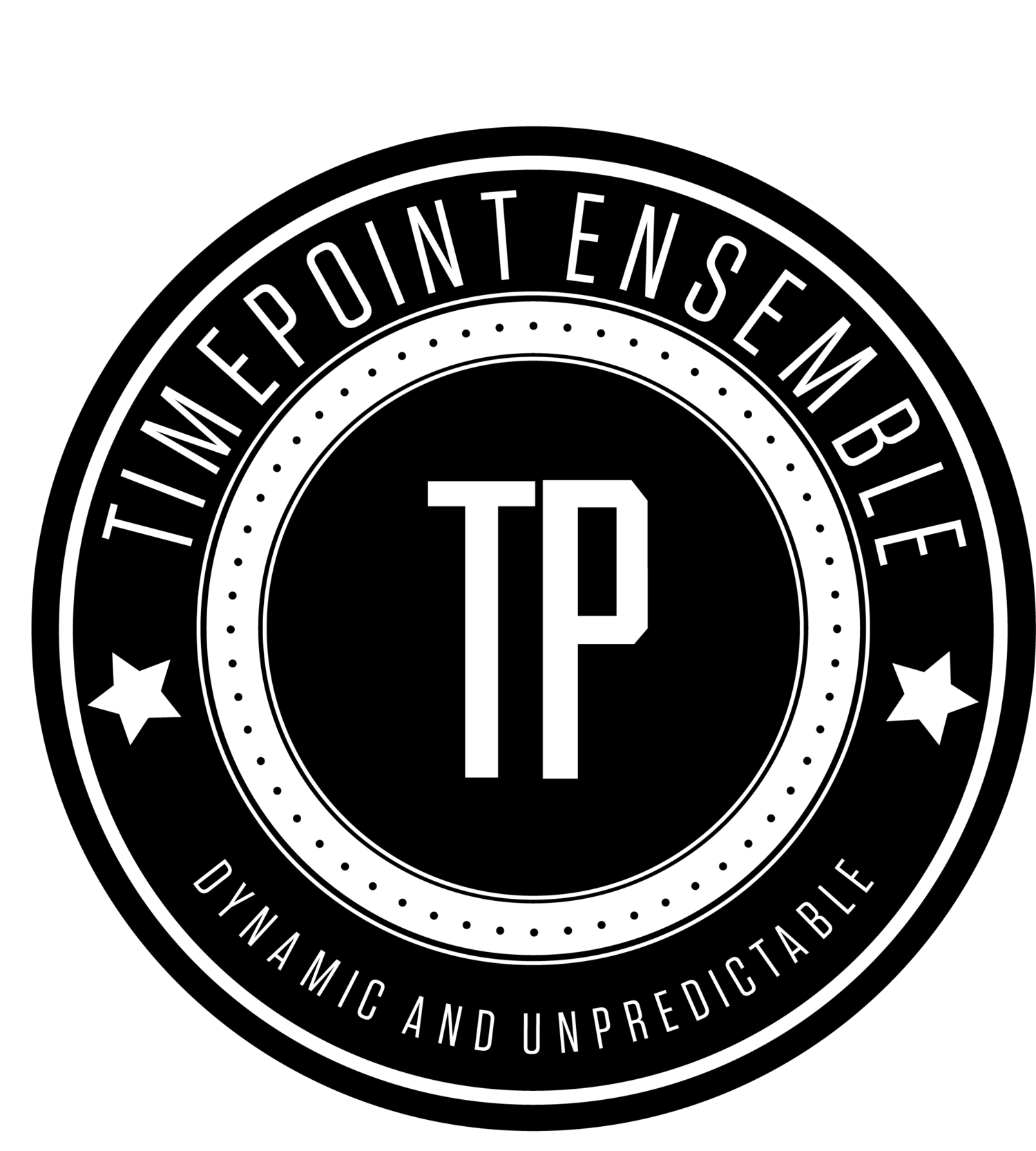Program Order
Timepoint Set:
Electric Counterpoint - Steve Reich
23 - Ted Hearne
CJO set:
Tunes
Joint Set
Crib Dweller - Ted Hearne
Randos - Ted Hearne
Snowball - Ted Hearne
Notes
Steve Reich
Electric Counterpoint (1987) For Guitar and Tape
Electric Counterpoint (1987) was commissioned by the Brooklyn Academy of Music’s Next Wave Festival for guitarist Pat Metheny. It was composed during the summer of 1987. The duration is about 15 minutes. It is the third in a series of pieces (first Vermont Counterpoint in 1982 for flutist Ransom Wilson followed by New York Counterpoint in 1985 for clarinettist Richard Stolzman) all dealing with a soloist playing against a pre-recorded tape of themselves. In Electric Counterpoint the soloist pre-records as many as 10 guitars and 2 electric bass parts and then plays the final 11th guitar part live against the tape. I would like to thank Pat Metheny for showing me how to improve the piece in terms of making it more idiomatic for the guitar.
Electric Counterpoint is in three movements; fast, slow, fast, played one after the other without pause. The first movement, after an introductory pulsing section where the harmonies of the movement are stated, uses a theme derived from Central African horn music that I became aware of through the ethnomusicologist Simha Arom. That theme is built up in eight voice canon and while the remaining two guitars and bass play pulsing harmonies the soloist plays melodic patterns that result from the contrapuntal interlocking of those eight pre-recorded guitars.
The second movement cuts the tempo in half, changes key and introduces a new theme, which is then slowly built up in nine guitars in canon. Once again two other guitars and bass supply harmony while the soloist brings out melodic patterns that result from the overall contrapuntal web.
The third movement returns to the original tempo and key and introduces a new pattern in triple meter. After building up a four guitar canon two bass guitars enter suddenly to further stress the triple meter. The soloist then introduces a new series of strummed chords that are then built up in three guitar canon. When these are complete the soloist returns to melodic patterns that result from the overall counterpoint when suddenly the basses begin to change both key and meter back and forth between E minor and C minor and between 3/2 and 12/8 so that one hears first 3 groups of 4 eighth notes and then 4 groups of 3 eighth notes. These rhythmic and tonal changes speed up more and more rapidly until at the end the basses slowly fade out and the ambiguities are finally resolved in 12/8 and E minor.
Steve Reich
Ted Hearne
23 (2005)
I composed this music on my 23rd birthday
After I had completed the piece, I wrote this sentence in the performance notes: “In the most dense passages there should be a feeling of insecurity in the groove, pushed to the limit, filled with so much excitement that it could collapse at any moment”
I’m sure I didn’t intend it at the time, but looking back, these words also describe how it felt to be 23.
Ted Hearne
Ted Hearne
Crib Dweller (2007)
Calm, unsettled, and patient.
Ted Hearne
Randos (2012)
Randos consists of several short movements, inspired by the sound and form of Stravinsky's seminal work L'Histoire du Soldat. Movements may be inserted at the discretion of performers during a performance of the Stravinsky.
Randos was originally conceived as part of a collaborative project with other members of the Sleeping Giant collective. Together we wrote 40 minutes of music to accompany, reflect and comment on L'Histoire.
Ted Hearne
Snowball (2008)
"The musical cocktail on 'Snowball' maintains the ants-in-your-pants energy of a bebop band, but with a highly composed sense of twentieth-century melody - the sort of unsingable lines that only an instrument could play. The rhythm, too, never settles, but still compels the body to move in frantic foot-taps and air-drumming."
(Ross Simonini, The Believer)

